The strawberry poison frog (Oophaga pumilio) is a species of Dendrobatid that is widespread from Nicaragua to Panama. It is commonly known as the “blue jeans” poison frog, as many populations (especially those in the northern parts of the species’ range) exhibit red colouration with blue or black legs. However, the strawberry poison frog is in fact, one of the most variable species of vertebrates on Earth. Herpetologists have identified well over 100 different colour forms of the poison frogs, but nowhere hosts as much pumilio diversity as Bocas del Toro in Panama. In 2023, I visited the archipelago to find and photograph as many morphs as possible.
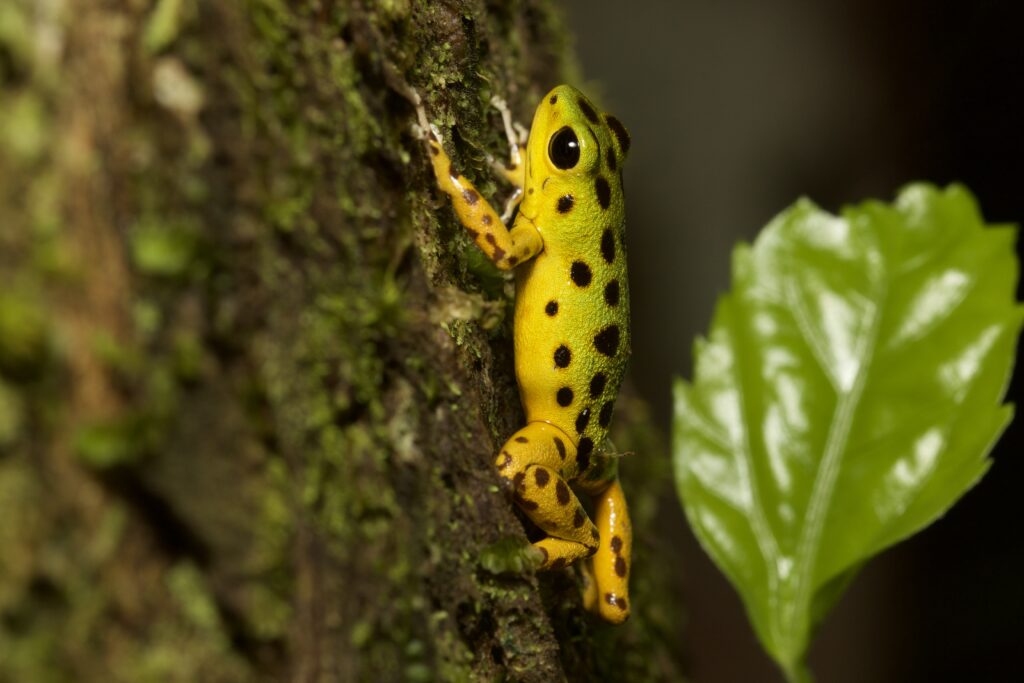
Bocas del Toro
The name “Bocas del Toro” translates to “Mouth of the Bull” which is what Christopher Columbus named the archipelago when Westerners first encountered the islands in 1502. Now colloquially known as “Bocas”, the islands are a famous party destination in the Caribbean that is easily accessible from both Panama City and San Jose in Costa Rica.
Bocas del Toro is also a province within Panama, consisting of the nine main islands in the archipelago (as well as the dozens of smaller adjacent islands), the Almirante region and Chiriqui Lagoon.
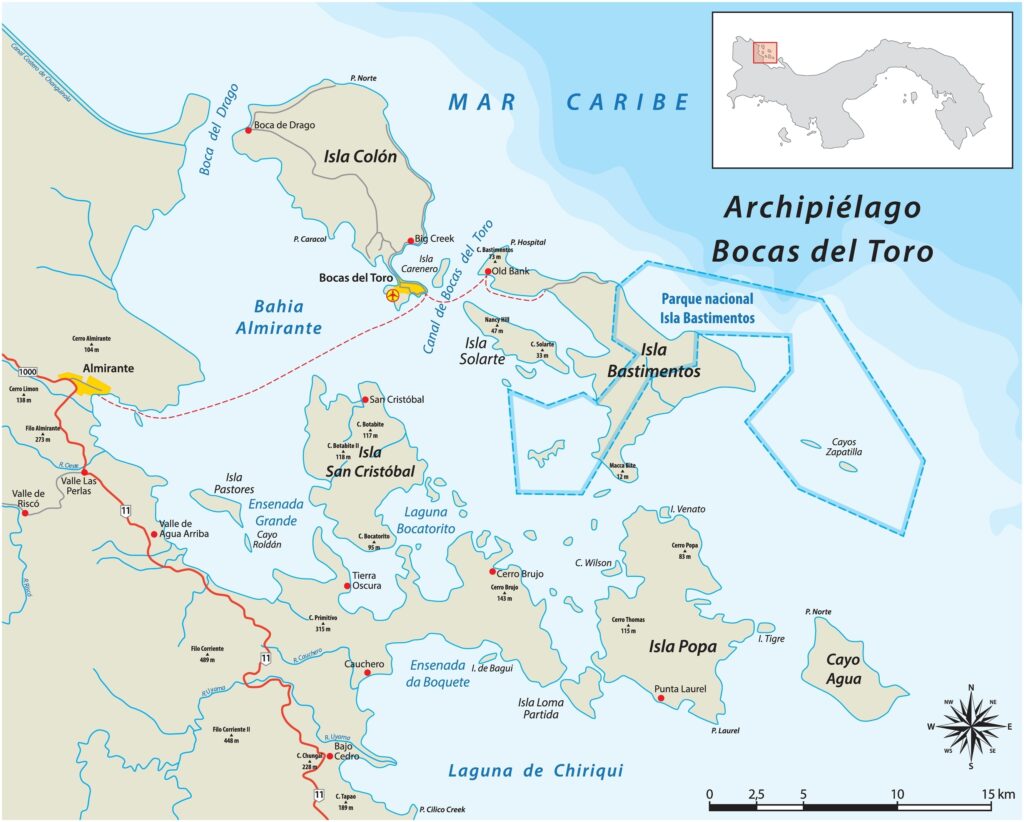
Poison Frogs of Bastimentos
Bastimentos is the largest of the islands in the archipelago. “Bastimentos” means “provisions” and this island played an important role in Christopher Columbus’ expedition to find the “Pacific Passage”. There are five accessible beaches and several coves and inlets on this island. Off the south coast are two smaller islets, Crawl Cay (which is famous for its dwarf population of Boa imperator) and Zapatilla Cay (an uninhabited island considered to sport one of the most beautiful beaches in the Caribbean).
The strawberry poison frogs that are found on Bastimentos are some of the most famous of the archipelago and very popular in captivity. This is partly because “Red Frog Beach” is also one of the most popular tourist spots in Bocas del Toro. Every restaurant, hotel and shop has some affiliation with the poison frogs which are beyond abundant. It is possible to see dozens of poison frogs within a five-minute walk between hotel rooms. Being such a toxic animal, poison frogs are remarkably bold in their behaviours and will even move across huge expanses of open ground (such as a patio or pool deck) to find a suitable vantage point to call from.
On Bastimentos, there are multiple colour forms and different populations exhibiting different patterns. The “Red Frog Beach” population is mostly bright red with large, defined spots across their entire body. Some individuals will have variable patterns but typically follow this colouration. Further West, the frogs begin to exhibit a white pattern on their underside – a population that is known in the trade as “Cemetery”. The population at the westernmost tip of Bastimentos Island have even more prominent white colouration and are also referred to in the trade as “Cemetery”. However, there is clear distinction between the eastern and the western animals even within this tiny population of frogs. It is also not uncommon to see unusual examples of “Cemetery” and “Red Frog Beach” colour morphs, where the spots have merged into stripes, or the red colouration has an unusual orange hue.
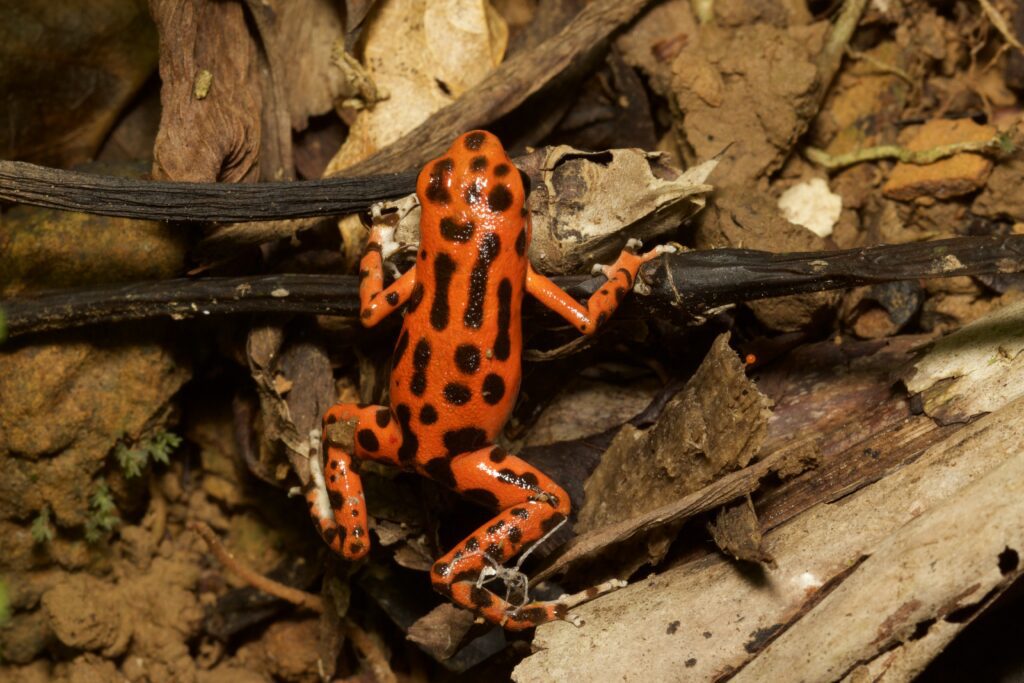
The westernmost population of strawberry poison frogs on Bastimentos are called “Bastimentos West” in the trade. However, this particular population is polymorphic. This means that within a single population, there are multiple very distinct morphological differences. Some of these frogs are red and white, whilst others are a beautiful cream or orange colouration. Hobbyists have named the most striking of these animals “Bastimentos Gold Dust”. These animals are far less common in the wild than their red counterparts but do frequently appear within the “Bastimentos West” population on the island.
The frogs on the east of Bastimentos also exhibit some startling polymorphism. This region of the island is far harder to reach and requires a private boat taxi to reach its uninhabited coast. However, the frogs that live in the Uyama River basin, despite only actually being a few dozen miles from the predominantly red populations in the West, look like a completely new species. The “Uyama River” colour form is a deep black/blue colour with sporadic stripes and blotches of other colours. Within this population, different frogs can have blotches of blue, yellow or red. These animals are typically very rare in captivity and exporters (and smugglers) have generally favoured the more striking red and gold frogs from the western half of Bastimentos.
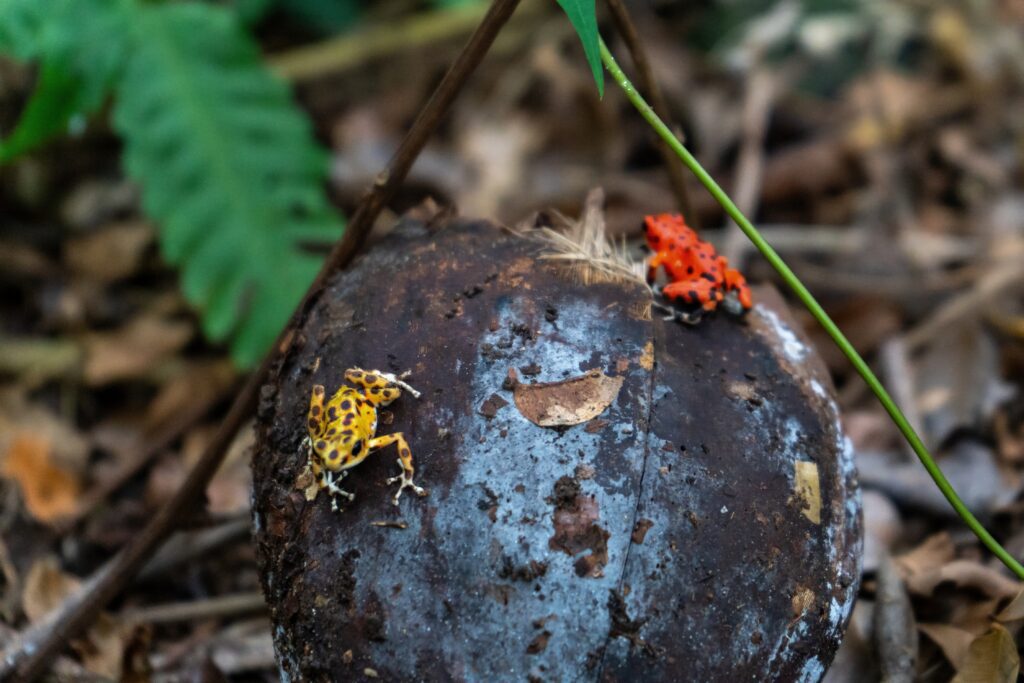
Poison Frogs of Colón Island
Colón is the gateway to the Bocas archipelago and is the home of “Bocas Town”, the most inhabited region on the islands. Just one main road connects this large town on the south part of the island with a far smaller village to the north known as “Bocas del Drago” (Mouth of the Dragon). It is in the north where several of the most strikingly beautiful pumilio morphs can be found.
On Colón, the poison frogs are a mix of vibrant green and neon yellow, with blue or orange legs and variable spots. Several localities have been identified on this island. The most widespread is the “Isla Colón” form, which has an olive-green torso with orange legs and uniform spots across the entire body. On the north coast, towards the east, the Mimitimbi River also has a unique locality. These frogs are a more striking green, with pastel blue legs and small sporadic spots. Towards the west, closer to Boca del Drago, the “Drago” form can be found, which has more yellowish tones in its torso colour.
In captivity, there are also some “lines” with unclear origins. In herpetoculture, a “line” is a particular lineage that may possess a unique characteristic. For example, if a breeder imported some animals from a country in the 80s but took particular care in pairing up unrelated animals to produce remarkably strong individuals, they would reference the line. Similarly, if they happened to source their animals from a remarkably different population (perhaps a dwarven line of boa constrictors, or a “white” line of crested geckos), they would also reference the “line” when selling or trading animals. In the trade, there are several “lines” of pumilio that are not necessarily distinct localities but exhibit slightly more unusual characteristics. These animals can be observed in the wild (I encountered multiple orange frogs on “Red Frog Beach” and some bronze frogs on Colón), but are not typical within a diverse population with mixed bloodlines. The “Villegas” line of “Colón” pumilio is a good example of this. These animals have much larger, less distinct spots that form stripes and lines down the animals’ torsos.
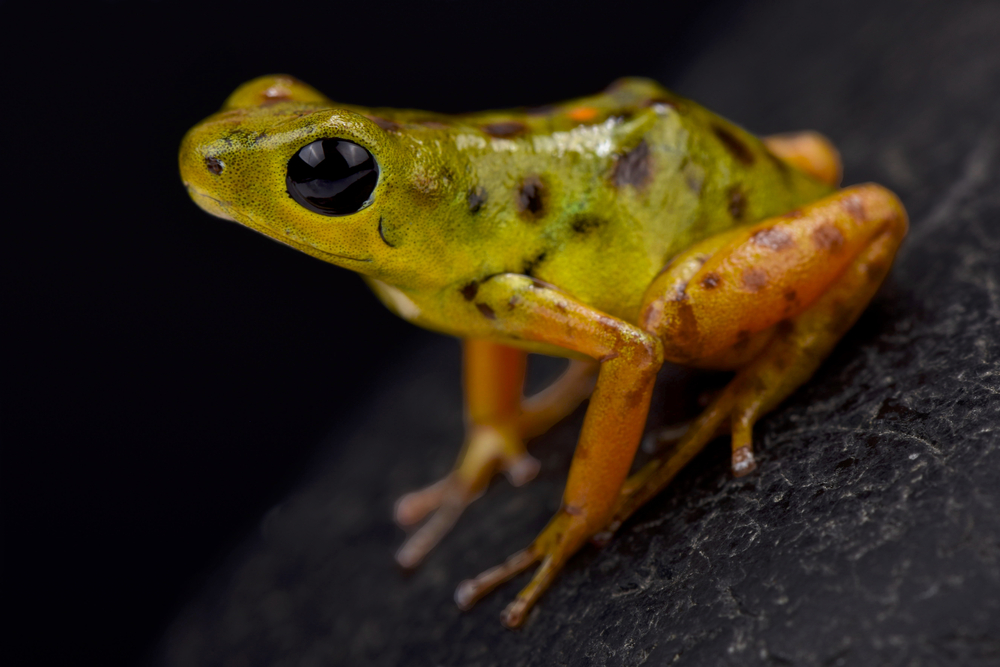
Poison Frogs of Solarte
Previously named “Cayo Nancy”, Solarte sits just a few hundred metres off the western shores of Bastimentos. It is almost entirely forested, with no towns, villages or shops. The poison frogs of Solarte are vibrant orange with white toe pads. In my experience, the Solarte frogs were the boldest I encountered but also the least numerous. Populations were small and isolated to waterlogged and boggy regions in the centre of the island.
The “Solarte” colour form is not frequently seen in captivity, but the “Almirante” form is. Almirante is the port town in Bocas del Toro that provides travel connections from the mainland to the islands. The frogs that inhabit this region are also orange but typically have black toe pads or legs.
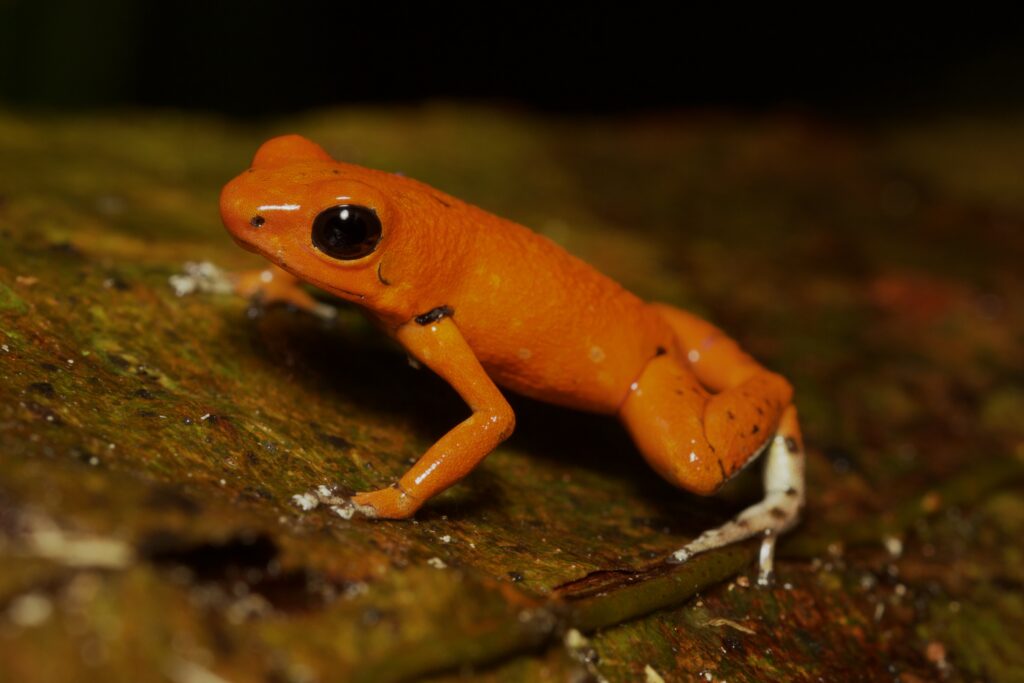
Poison Frogs of Agua Cayo
Agua Cayo is the easternmost island in Bocas del Toro and separates the department from the neighbouring Chiriqui region. With a surface area of just 16 km2, it is one of the smallest islands that hosts a population of strawberry poison frogs. Interestingly, the pumilio on the easternmost island in the archipelago have the same greenish hue as those on the westernmost island of Colón. Even though just about every coloured frog can be found between the two islands, these frogs look very similar. There are numerous theories as to why each population of Oophaga pumilio has adapted a new colouration. The most accepted is that each population has required slightly different, bolder or brighter colours to warn off the specific predators they encounter in the wild. The resemblance between “Agua Cayo” and “Colon” frogs suggests they face similar threats from similar densities of predators on both islands.
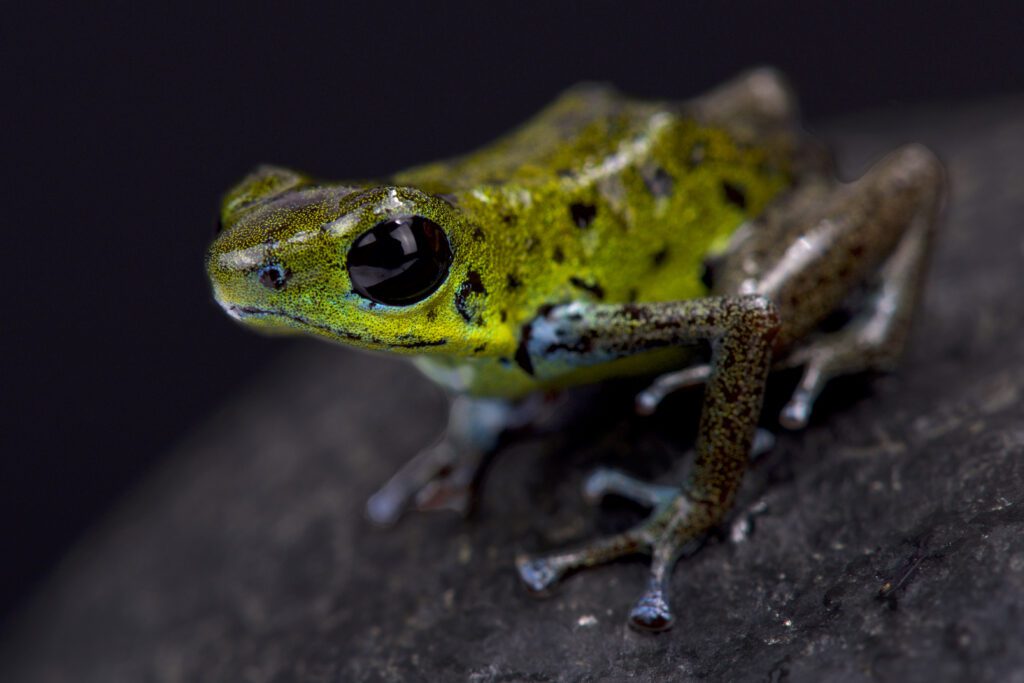
Isla San Cristobal
Isla San Cristobal is an island that sits just off the mainland of Panama and is home to a vast number of pumilio morphs. Sadly, San Cristobal has seen a lot of deforestation due to its proximity to the mainland. It is inhabited by some indigenous communities as well as many American expatriates. San Cristobal has a complex shape, with peninsulas, bays, creeks and lagoons which may have an impact on the geographic distribution of the pumilio populations.
Most of the frogs on San Cristobal are red or orange with much smaller spots or a reticulated pattern. Leg colouration can also vary across the populations from a silvery-grey to a deep black. This island is home to the colloquially named “Bahia Grande” and “Cristobal” morphs that are frequently seen within the hobby. The strawberry poison frogs on San Cristobal exemplify the colloquial name “strawberry” as they have lots of tiny black spots against a red base colour.
Other Poison Frog Localities
There are dozens more colour morphs of oophaga pumilio just in the Bocas del Toro region. Escudo de Veraguas for example, is located many miles from the archipelago and has been isolated for over 9,000 years. Here, the poison frogs are a bright blue. The populations on the nearby Valiente Peninsula are also a mix of blue and green.
Even within known colour forms such as “Blue Jeans”, different localities will possess slightly different traits. The “Blue Jeans” found in Nicaragua are brightly coloured, with blotches of black across their torso. The “Blue Jeans” in La Selva in Costa Rica have light colouration with blue legs and arms, whilst the “Blue Jeans” in nearby Guapiles are much darker and only the hind legs are blue.
Scientists believe that the colour variation displayed in Oophaga pumilio is not only indicative of the toxicity of the population but is also a result of sexual selection. Poison frogs use their aposematic colouration to warn away predators. This means their behaviour is remarkably bold and males will occupy the most visible vantage point in their territory to call from, to attract a mate. Scientists have already proven that female strawberry poison frogs exhibit call preferences, suggesting there may also have been some genetic drift influenced by colouration preferences from male-to-male and male-to-female signalling. However, the most obvious suggestion is that toxic frogs that have had to evolve in regions with more predators, require brighter colouration. If these predators hunt from above, the frog may have evolved a brighter torso. If the predators hunt from behind, they may have evolved brighter legs. This theory still leaves huge questions over why pumilio exhibits such a massive degree of variation while other members of the Oophaga genus only exhibit some, but it does offer a logical explanation for scientists to unpick.
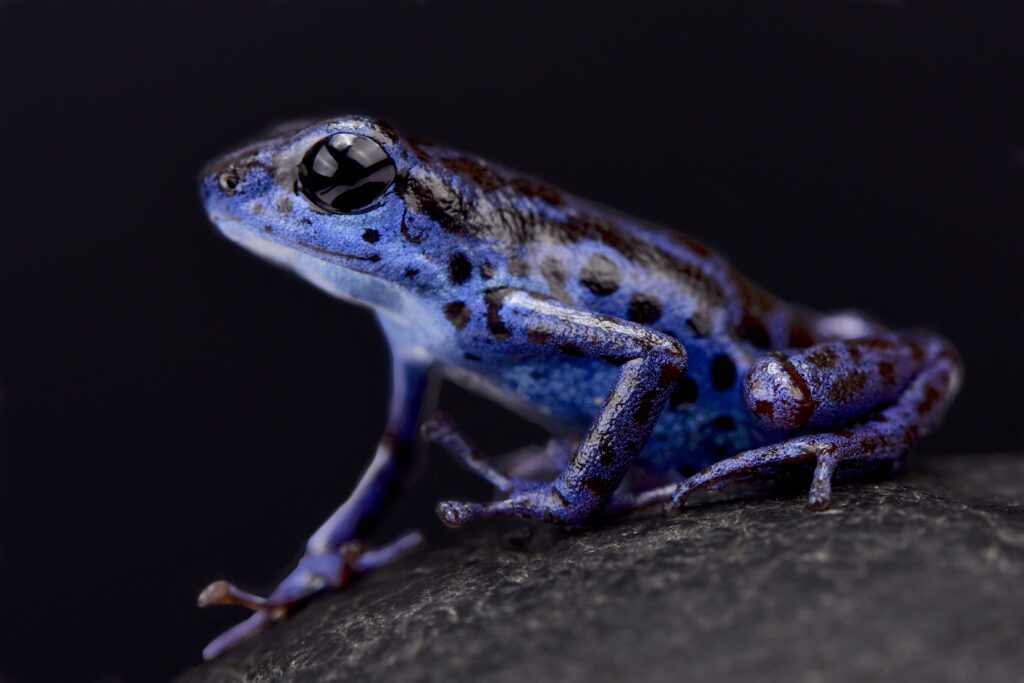
Dendrobatids in the Trade
Today, exotics keeping is dominated by “morphs” and these tend to be animals that have been selectively bred for their desirable colours and patterns. However, many species exhibit a dizzying array of variation between localities. “Okeetee” is a naturally-occurring mutation present in a whole population of wild corn snakes. “Dwarf” reticulated pythons are naturally occurring on some southwest Indonesian islands (although lineage can be difficult to track and careful consideration should be taken when sourcing these bloodlines). Herpetofauna diversity is vast and with many genetic issues arising because of excessive morph-focused breeding, a new focus on localities may offer the ability for keepers to maintain the right species for them, whilst also pioneering some new and interesting breeding projects. Whilst locality breeding does require careful consideration when sourcing animals and managing bloodlines, it may offer far more herpetological insight and potential than traditional “morph breeding”.
If you enjoyed this read, you can find out more about another species of poison frog, the Golfodulcean poison frog (Phyllobates vittatus), here.